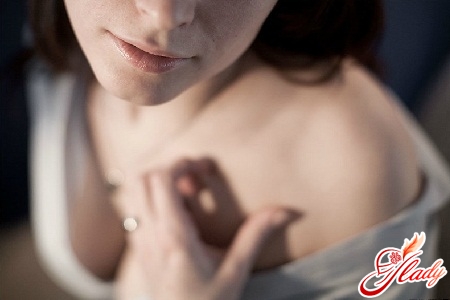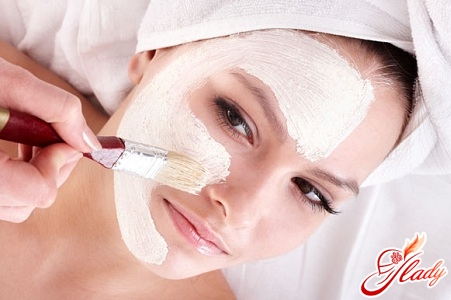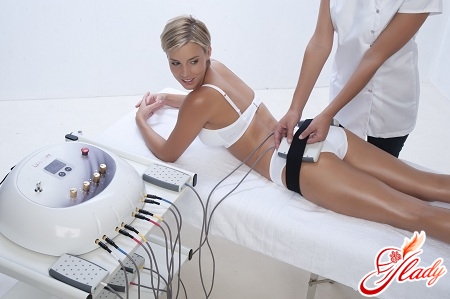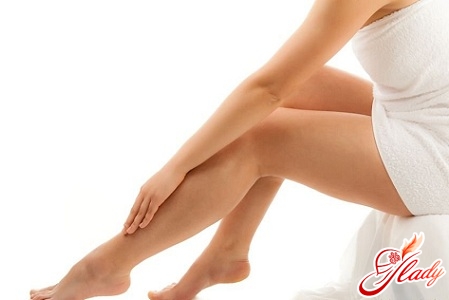 Scarification, or scarification (fromfrom the Latin word "scarification", which means "cutting", "scratching"), is considered one of the most extreme types of body modifications. Artistic scarification is the application of decorative scars and artistic cicatrices to the body in a finished form, which represent some kind of drawing. It turns out that body scarification is called a kind of body art. This kind of decoration, such as decorative scars and cicatrices, are so exotic that not everyone can imagine how to do it - to make scarification, or simply a pattern of scars. And yet, some even call it art. At first, as a rule, there is a suspicion that all body modifications are phenomena of the same order. But, no - for a hundred people with tattoos, you can hardly find one who has done scarification on his body - a tattoo is just child's play compared to the idea of cutting up your body or face. A whole science of scarification techniques has already been created: for example, a scar remains convex if the skin is cut at a certain angle, and after a burn, a scar is formed with a depression. Also, traces of fake bites are applied to the skin of the body, these are just drawings. Scarification also includes the implantation of various foreign bodies under the skin. They can be both precious metals and pieces of plastic, which will form a pattern for beautiful scarification. Like a tattoo, scarification can provide an extremely large scope for creative imagination: photos with various drawings, which can be absolutely anything, serve as proof of this. These drawings have only one visible difference - they form a complex bas-relief on the skin of the body. This, in fact, is the main feature and, one might say, the beauty of scarification. As a rule, scarification is done on the back, on the arm and even on the face. Most often, scarification on the face is done by people who have scars of natural origin after some kind of incident. They have a desire to somehow artistically disguise them, so that they get beautiful scarring. And sometimes, on the contrary, someone specifically wants scarring in the form of natural scars, that is, which in their form and appearance are as close as possible to real ones - for example, from a knife wound. You can’t say about this: this is artistic scarring - pictures of such scars can really scare. But, as they say, everyone has different tastes.
Scarification, or scarification (fromfrom the Latin word "scarification", which means "cutting", "scratching"), is considered one of the most extreme types of body modifications. Artistic scarification is the application of decorative scars and artistic cicatrices to the body in a finished form, which represent some kind of drawing. It turns out that body scarification is called a kind of body art. This kind of decoration, such as decorative scars and cicatrices, are so exotic that not everyone can imagine how to do it - to make scarification, or simply a pattern of scars. And yet, some even call it art. At first, as a rule, there is a suspicion that all body modifications are phenomena of the same order. But, no - for a hundred people with tattoos, you can hardly find one who has done scarification on his body - a tattoo is just child's play compared to the idea of cutting up your body or face. A whole science of scarification techniques has already been created: for example, a scar remains convex if the skin is cut at a certain angle, and after a burn, a scar is formed with a depression. Also, traces of fake bites are applied to the skin of the body, these are just drawings. Scarification also includes the implantation of various foreign bodies under the skin. They can be both precious metals and pieces of plastic, which will form a pattern for beautiful scarification. Like a tattoo, scarification can provide an extremely large scope for creative imagination: photos with various drawings, which can be absolutely anything, serve as proof of this. These drawings have only one visible difference - they form a complex bas-relief on the skin of the body. This, in fact, is the main feature and, one might say, the beauty of scarification. As a rule, scarification is done on the back, on the arm and even on the face. Most often, scarification on the face is done by people who have scars of natural origin after some kind of incident. They have a desire to somehow artistically disguise them, so that they get beautiful scarring. And sometimes, on the contrary, someone specifically wants scarring in the form of natural scars, that is, which in their form and appearance are as close as possible to real ones - for example, from a knife wound. You can’t say about this: this is artistic scarring - pictures of such scars can really scare. But, as they say, everyone has different tastes.
Scarification history
Like piercings and tattoos, body scarificationcenturies-old history, during which not only the technique of scarification was subject to change, but also the meaning of applying patterns in the form of scars to the body. So in the most ancient tribes, scarification of the body had a ritual character, and, moreover, served as a sign of distinction. Thus, for example, they noted their belonging to the warriors. Even today you can see a photo of scarification on the body or face, which was common among the currently existing various tribes that have preserved their ancient culture to this day. It should be noted that the scarification ritual originated and then developed in many cultures at the same time. At the same time, each of them had its own special and unique meaning. Scarification received its greatest development in Australia and the African continent. Naturally, the main prerequisite for this is the fact that the overwhelming majority of black representatives of that population. After all, tattoos are poorly distinguishable on dark skin. It is for this reason that people made much more noticeable scarification on their bodies. Also quite often, for example, scarification on the hand, had a ritual meaning. The ancient tribe of "crocodiles" covered their hands with notches that imitated crocodile skin, that is, in this way they paid tribute to the deity they worshiped. And scarification on the wrist was practiced in all centuries of the slave system. Then each slave was branded with a hot iron, showing his belonging to his master. In addition, there were many traditions that were associated with scarification on the face. For example, in the nineteenth century in Europe, among fencing clubs, a scar on the face that was received in a duel was considered a real sign of honor. Therefore, there were those who did it themselves to increase their authority. In different countries, scarification was used to identify criminals. In such cases, the branding technique was used. The most exposed areas of the body were branded for subsequent identification of criminals, especially since each crime had its own specific symbol. As you can see, for quite a long time in history, scarification was used only in certain circles, and it did not at all relate to the art of decorating the skin of the body. And only with the advent of the present time, views on many things and phenomena have changed, including modification or decoration of the body. Today, scarification and tattoos are a real separate subculture, which has both many adherents and many opponents. At the same time, artistic scarification is becoming increasingly popular, both among women and men. Only it turns out that on the one hand, such body modification is a way of self-expression, gaining inner freedom, and on the other hand, it can also lead to rather sad consequences of scarification.
Scarification types and methods of application
- BRANDING (Branding, Burning):
Strike Branding – skin burning.In other words, branding. Almost always done not with the help of one cauterization, but is composed of lines that are applied separately. This method is well suited for scarification on the back. Cautery branding is scarification for which a special form is used. Laser branding is laser branding. It is applied with a laser beam, which creates an igniting effect. Cold branding is a process that is the opposite of cauterization. When a scar is formed due to contact with an object with an extremely low temperature. Most often, such scarification is achieved by treating the instrument with liquid nitrogen.
- CUTTING (Cosmetic skin cutting)
Skin Removal – is the removal of a section of skin.The most common method today, since its use makes it possible to obtain the clearest contours, cut fairly small details and achieve the utmost accuracy of lines. All this is done with a scalpel. Packing - this method is very popular in the West today, although it appeared in Africa and had an exclusively ritual character. The meaning of this method is to rub some foreign substance (ash, for example) into a cut on the skin (on the African continent, even the ashes of relatives were sometimes used). Then, when the healing process begins, the body strives to push out the foreign substance and as a result, keloids are formed. This is usually done when scarring the wrist. In addition, sometimes tattoo pigment is rubbed into the cut on the skin. Thus, a drawing remains under the person's skin. True, it turns out ugly and very blurry. This method is called Ink rubbing.
How is scarification done?
Get an approximate idea of howделается шрамирование, можно по различным фотографиям, на которых поэтапно зафиксированы все основные фазы такой процедуры. Для того, чтобы самому стать мастером шрамирования подобной информации, естественно, будет недостаточно, но тем, кто размышляет о том, делать ли процедуру, нужно иметь хотя бы общее представление, как делают шрамирование. Крайне важный момент в процессе шрамирования — это анестезия. Перед тем, как сделать шрамирование с применением обезболивающих препаратов, мастер обязательно должен убедиться в отсутствии различных аллергических реакций и противопоказаний на компоненты, которые входят в их состав. Чтобы выбрать эскиз, рекомендуется просмотреть все фото и картинки шрамирования, выполненного в различной технике. Разумеется, личные увлечения и интересы при выборе узора так же играют далеко не последнюю роль. Нанесение узора тоже имеет большое значение. Как правило, шрамирование не делается на таких опасных частях тела, как те, где есть важные кровеносные сосуды, которые к тому же и располагаются слишком близко к поверхности кожи. Этот момент является еще одним существенным поводом обращаться исключительно к профессионалам, а не делать шрамирование дома, так как на теле человека есть много жизненно важных вен и артерий, повреждение которых даже станет причиной летального исхода. Конечно, стоимость шрамирования у профессиональных мастеров в салонах может превышать стоимость создания татуировок. Цена колеблется в зависимости от размера и сложности рисунка. Но даже, если указанная цена окажется неподходящей, то это вовсе не значит, что стоит делать шрамирование в домашних условиях. Ведь для проведения такой процедуры необходимы знания в области медицины и хирургии, санитарные условия и, разумеется, специальные стерильные инструменты. А при выполнении шрамирования дома почти невозможно добиться максимального обеспечения требуемых условий, и к тому же только непрофессиональный мастер согласится на такое, и при шрамировании в домашних условиях не даст вам никаких гарантий. Надо отметить, что и дорогие салоны с наличием всех разрешительных документов, так же, к сожалению, не всегда будут залогом качественно сделанного шрамирования но, тем не менее, риск заражения в условиях профессионального салона, всё-таки, намного меньше. А по фото шрамирования, которое выполнено выбранным мастером, можно узнать об уровне его профессионализма и искусности. Не существует никаких стандартных сроков заживления шрамирования, потому что это зависит от очень многих факторов. Самыми главными из них являются, естественно, площадь поверхности тканей, которая была повреждена, способ нанесения шрама, а также индивидуальные возможности вашего организма к заживлению ран. На весь период времени заживления обязательно следует обеспечить повреждённой поверхности и тканям, прилегающим около неё, абсолютно стерильную чистоту. К самым главным опасным последствиям относится попадание в рану инфекции. Именно поэтому нужно тщательнейшим образом следить за чистотой раны. Последствия шрамирования в себя так же включают возможность БТШ (болевой травматический шок), когда операция проводится без анестезии, вероятность анафилаксии (анафилактический шок) при её применении, и неправильное рубцевание (например, келоидное).









